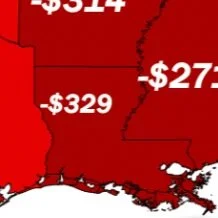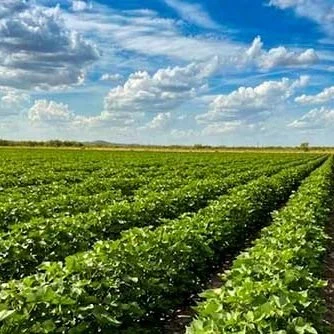For more than two decades, and over the course of the last four farm bills, farm program payments have been based on a farm’s historical planted acreage, i.e., base acres, and not on actual plantings each year. Decoupling Agriculture Risk Coverage and Price Loss Coverage farm program payments prevents farmers from making planting decisions based on expected program payments. Instead, the current system ensures farmers evaluate only market supply and demand signals and expected returns per acre when determining which crops to plant each year.
Read MoreHot weather across the cotton belt is creating uncertainty about the size of the US crop, said Shawn Wade, director of policy analysis and research at Plains Cotton Growers. “It could be anywhere between 14 million bale to 16 million bale crops. You’ve got some pretty high temperatures settling into parts of Louisiana, Mississippi.”
Read MoreIf you want to honor a cotton consultant, nominate him or her for the prestigious 2023 Cotton Consultant of the Year (CCOY) Award. Click here to access the 2023 nomination form. The deadline for nominations is August 15. If you have any questions, call Carroll Smith at 901-326-4443 or email csmith@onegrower.com.
Read MoreThe U.S. Cotton Trust Protocol today announced the appointment of Daren Abney as Executive Director. A sustainability veteran, Abney brings 15 years of international experience garnered in organizations across the apparel and fashion industry such as Better Cotton, Textile Exchange, and most recently Lenzing Group.
Read MoreThere will be a cotton/corn/soybean field tour at the Northeast Research Station in St. Joseph next Tuesday, July 25th, beginning at 5 pm. It will feature talks on row spacing, fertility, weed control, disease and insect control. It will also have one stop showing the difference between planting cotton into 2 different cover crops. There will be a meal after the tours are over.
Read MoreCotton Incorporated is conducting a Natural Resource Survey with all U.S. cotton producers. This survey will guide Cotton Incorporated's future research priorities and help document U.S. cotton production improvements. The online survey should take 25 to 35 minutes to complete, and participants who complete the survey before July 31st will be mailed a free 30oz YETI Rambler cup featuring the Seal of Cotton trademark.
Read MoreIt’s been hot and dry for the most part across most of the southern cotton belt.
Read MoreThe NCC, as well as many national/regional cotton organizations, joined 400 other agriculture groups on a letter to the House and Senate budget committees’ leadership requesting sufficient budgetary resources to write a new bipartisan, multi-year, comprehensive and meaningful farm bill.
Read MoreDespite myriad forces facing rice farmers in 2023, the U.S. Department of Agriculture’s Natural Agricultural Statistical Service (NASS) now projects that about 1.311 million acres of the crop have been planted in Arkansas. That’s nearly 200,000 more acres than were planted in 2022, according to the latest NASS report released June 30.
Nationally, about 2.687 million acres have been planted, a nearly 400,000-acre uptick since the last growing season. California ranks second in rice production with 478,000 acres, while Louisiana ranks third with about 460,000 acres.
Read MoreDuring the heat of the production season, early risers and late nighters aptly describes the nature of a crop consultant. Their day typically begins before sunup as they head out to the field to start work at first light. A cell phone, laptop, notebooks, sweep nets and drop cloths adorn their rolling office. After arriving home that night, they spend a lot of time reviewing notes, sending reports to their farmers and preparing to go again in the morning.
Read MoreFreezing temperatures didn't reduce insect pressure in Mississippi and Louisiana row crops. Soybean farmers can expect waves of redbanded stinkbugs.
Read MoreLast year brought a glimmer of hope to cotton farmers as both prices and acreage soared across the mid-South. But that optimism has faded for Louisiana cotton growers as prices have dropped and acreage is being reduced. LSU AgCenter reporter Craig Gautreaux has this report.
Read MoreThis report contains the results from the 2022 December Agricultural and Row Crops County Agricultural Production surveys
Read MoreFiguring out how the Endangered Species Act affects the agricultural industry can be both complex and frustrating. The ESA of 1973 was enacted by Congress under President Nixon and has since drawn much attention to species across the United States that had/have the potential to be threatened or completely wiped from the map.
Read MoreAfter crop emergence, producers should concentrate on managing the cotton plant from the first- through fifth-leaf stage. Reaching the fifth true leaf stage with minimal damage from thrips is a key factor in producing good cotton yields.
Read More













